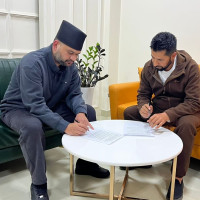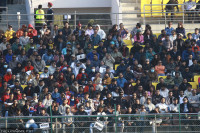Opinion
Electoral competency
Women are still underrepresented in Nepali politics and the PR system has not made it any better
Political parties have filed their nominations for 37 and 74 seats respectively for the upcoming first phase of federal and provincial parliamentary elections in 32 districts. According to the Election Commission, there are a total of 282 candidates contesting for the 37 seats for federal parliament. Similarly, 420 candidates are contesting for the 74 seats in provincial parliament. In total only 16 and 20 women filed their candidacy respectively for federal and provincial parliaments.
The major parties put very few women on the electoral list. Only two female candidates from Nepali Congress (NC) and one from CPN (Maoist Centre) will contest for the 37 seats available in the first phase of federal polls. No female candidates have been fielded by the CPN-UML. Likewise, three women from Maoist Centre, two from NC and one from UML will contest in the provincial polls in the first phase. Why is it that the number of women contesting in direct electoral competitions is decreasing?
Low representation
Underrepresentation of women in the electoral list for the direct, First Past The Post (FPTP) electoral competition is not a new phenomenon in Nepal; women have been constantly and consistently under-represented. For example, only six percent of total candidates that contested in the legislative elections in the 90s were women. Similarly, nine and 11 percent of total candidates contesting in the 2008 and 2013 Constituent Assembly (CA) polls were women.
The number of women representatives in the 1991, 1994 and 1999 Parliaments, respectively, were 7 (3.5 percent), 7 (3.5 percent) and 12 (6 percent). Similarly, in the 2008 and 2013 CA elections, only 30 (12.5 percent) and 10 (4 percent) women were elected from the direct (FPTP) electoral process. The underrepresentation of women was compensated via the Proportional Representation (PR) system in the 2008 and 2013 CA elections.
In the upcoming first phase of federal and provincial elections, the number of women standing for candidacy is almost null. The major parties seem very reluctant to put women in the electoral lists for direct electoral competition.
Underrepresentation of women in legislature is an outcome of long and historic female leadership gaps. For instance, there are only a handful of women in the district, constituency, (rural) municipality and ward leadership from the three major parties. There are many competent and competitive female leaders who deserve to be listed in the electoral list for direct electoral competition in major parties.
The cost of contesting in elections has increased. This increase in cost has affected candidates with low economic profiles despite their having the potential for leadership. Women bear the brunt of this hike in cost more than men, as the resource difference between men and women is still very large. The 2011 census reported that only 20 percent of households are under the ownership of a female.
Parties win votes, not candidates
The last legislative elections (1991, 1994 and 1999) and the CA elections show that the pattern of votes received greatly depends on party affiliation and party institutionalisation. That is, party affiliation explains more than 70 percent of votes received by a candidate. Therefore, major parties tend to receive a majority of the votes and have a higher electoral success rate. Major parties need not worry about the gender of the candidate, as they will receive votes on the basis of party affiliation regardless of whether candidates are male or female. There are a number of competent women just waiting to be given the chance to contest in polls.
Public electoral funding greatly depends upon the level of party networks and their supporters, and hence a candidate’s economic profile becomes less important. If the candidate’s party is well institutionalised, the probability of getting public funding for a electoral campaign is higher. Similarly, party supporters help to generate public electoral funding for candidates. Politicians often misuse their political power for the benefit of their supporters, particularly businessmen and contractors, in return for these supporters funding candidates during elections. NC and UML have a broad base of party supporters and so there is an increased probability that they will get electoral funding irrespective of the gender of their candidates.
The emerging trend of party funding and getting electoral tickets has been an alarming threat for candidates with low economic profiles and it greatly affects women candidates because they don’t have enough money to fund political parties to get tickets. Buying of electoral tickets and the dominance of the corporate sector in politics does not help to consolidate democracy. It promotes a potential leadership deficit, props up gender disparity in politics and makes politics dysfunctional.
The other challenge for women is that they are often placed in less competitive constituencies, or are put in constituencies where they have to contest against top political leaders. It can’t be a coincidence that top political leaders often contest elections from constituencies that have inexperienced women candidates running from opposition parties, or why major parties often pick these women to contest against top political leaders.
In order to address the underrepresentation of women and other marginalised unrepresented groups, a mixed model electoral system (FPTP and Proportional Representation) was adopted in 2008. The crux of the PR model of electoral system has been manipulated and misinterpreted by political parties. Now parties have started treating the PR system as the only avenue through which to push up women and other marginalised groups; they are reluctant to put the women on the electoral list for direct electoral competitions. Parties have started to put all the competent and competitive women leaders on the PR list, depriving them of participating in direct electoral politics.
Mahato is a PhD final year student at the Graduate School for Social Research, Warsaw, Poland and Ohio State University, USA




 9.12°C Kathmandu
9.12°C Kathmandu










